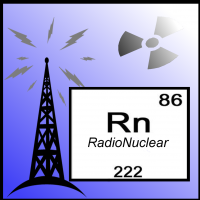New GE Hitachi “blocks” could cut costs in nuclear deployment

Researchers at GE Hitachi Nuclear recently completed a successful test on potential new building blocks made of steel-concrete composite.

A message from NV5, Inc.
Seconds Matter: Rethinking Nuclear Facility Security for the Modern Threat Landscape

Researchers at GE Hitachi Nuclear recently completed a successful test on potential new building blocks made of steel-concrete composite.

BWX Technologies Inc. received the second phase of a contract with the Wyoming Energy Authority to assess the viability of deploying small-scale nuclear reactors in the state.
The company’s subsidiary, BWXT Advanced Technologies LLC, has been executing the agreement, working with the state of Wyoming to define the requirements for nuclear applications and to study the engineering work needed to support the state’s future power needs. BWXT identified areas where Wyoming’s supply chain could support nuclear reactor component manufacturing.
A 60-year-old Wyoming industrial machinery company is partnering with nuclear innovator BWX Technologies to deploy 50-megawatt microreactors in America’s heartland over the coming years to provide carbon-free heat and power for industrial users.

California-based Oklo is partnering with Wyoming Hyperscale to power a state-of-the-art data center campus.
The companies, which announced the partnership last week, signed a nonbinding letter of intent to provide 100 megawatts of carbon-free energy for a 20-year power purchase agreement. Wyoming Hyperscale is building a data center on 58 acres of land on Aspen Mountain, a remote site southeast of Evanston, Wyo., and plans to use Oklo’s Aurora Powerhouse units to provide clean energy at the site.
 Welcome to the New Year! Even though I am on the road, there is just so much happening lately in nuclear I could not pass up the opportunity to talk about it! This episode of RadioNuclear, we take a look at recent and exciting legislation and policy for advanced nuclear. This includes the passages of the NEIMA and NEICA bills and what the Idaho National Laboratory may look like in the coming years. We also discuss the NRC's recent decision on post Fukushima regulation. Lastly, we look on how you can adopt a dog from the Chernobyl exclusion zone. No, I am not making that up!
Welcome to the New Year! Even though I am on the road, there is just so much happening lately in nuclear I could not pass up the opportunity to talk about it! This episode of RadioNuclear, we take a look at recent and exciting legislation and policy for advanced nuclear. This includes the passages of the NEIMA and NEICA bills and what the Idaho National Laboratory may look like in the coming years. We also discuss the NRC's recent decision on post Fukushima regulation. Lastly, we look on how you can adopt a dog from the Chernobyl exclusion zone. No, I am not making that up!
Two bipartisan pieces of legislation modernizing America's nuclear future have recently become law. It's still a long way from pushing nuclear builds the way we need to address a host of environmental issues, but it is a good start.
December 20, 1951 marks an important date in the history of nuclear power; it's the date on which the first useful electric power was generated by atomic fission. While the now-famous event at that time only powered four light bulbs, the somewhat stunt-like nature of the day obscured the fact that the plant was actually set up to generate considerably more power, and did so. Let's take a look at this fact and, at the same time, the facility through illustrations from my collection and from photographs that I took myself while touring EBR-1 earlier this year.